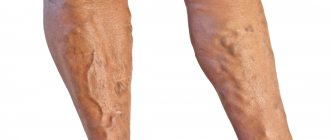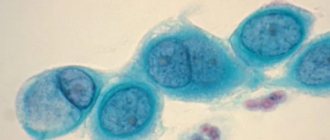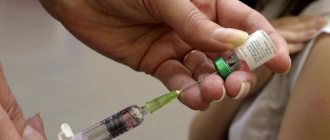Trichomoniasis is a leader among sexually transmitted diseases. From statistical data it is known that every sixth inhabitant of the earth has to come into contact with this problem. Approximately 10% of these occur in pregnant women. It cannot be said that Trichomonas in women is a harmless disease and does not cause any complications or pathological processes in the body. For patients expecting a child, trichomoniasis threatens complications for the unborn baby.
How to recognize the disease, what are its main symptoms? How can it be quickly diagnosed and treated? These and many other questions concern many female representatives. After all, each of them dreams of a happy family and healthy children. In order to understand all these issues, it is necessary to initially understand what the causative agent of this disease is and how its presence manifests itself.
Characteristics of the causative agent of trichomoniasis
Trichomonas are flagellated unicellular microorganisms capable of movement. The following types of these protozoa are found in the human body:
- Trichomonas elongata – lives in the oral cavity;
- Trichomonas vaginalis - lives and reproduces in the lower parts of the genitourinary system;
- Trichomonas hominis - inhabits the intestinal mucosa.
Trichomoniasis is caused only by vaginal trichomonas – Trichomonas vaginalis. They live exclusively in the organs of the genitourinary system. In the intestines and oral cavity, protozoa quickly die because they do not form a protective capsule around themselves.
The causative agents of trichomoniasis (Trichomonas vulvovaginitis) are unstable in the environment. Microorganisms die if:
- drying;
- exposure to direct sunlight;
- heating to a temperature of 45-50°C;
- sudden change in pressure.
Therefore, it is difficult to detect Trichomonas vaginalis in the environment. Microorganisms may persist for a short time in damp towels, linens or washcloths.
Trichomonas vaginalis is one of three types of trichomonas that parasitize the body. But only it provokes trichomoniasis in women and men.
Treatment
A complete cure for trichomoniasis is possible only if the following recommendations are followed:
- Both sexual partners must be treated at the same time.
- During therapy, all sexual contact should be excluded.
- Among medications, it is necessary to use anti-trichomonas drugs, for example, Metronidazole or Tinidazole, as well as vaginal suppositories Klion-D.
- When diagnosing other associated diseases of the genitourinary system, it is imperative to treat them with trichomoniasis at the same time.
- During treatment, special attention should be paid to genital hygiene.
Routes of infection with Trichomonas
Trichomoniasis is a common urogenital disease that is transmitted primarily through sexual contact. Diagnosed in 65% of women of reproductive age suffering from STIs. The pathology poses a serious danger, since it occurs in a latent form for a long period.
To find out where urogenital trichomonas come from, you should consider the main routes of infection. Trichomonas vaginalis colonizes the stratified epithelium that lines the inner surface of the genital organs. Protozoa actively reproduce under certain conditions:
- temperature up to 37.5°C;
- acidic environment with pH in the range of 6.0-6.5;
- high humidity.
The causative agents of trichomoniasis are found in the urinary tract, urethra, cervix, and Bartholin glands. Much less often microorganisms penetrate the fallopian tubes.
Possible routes of infection with Trichomonas infection:
- Sexual. In 75% of cases, trichomoniasis infection occurs through unprotected sex with an infected man.
- Contact. Very rarely, trichomoniasis is detected in newborn girls. Infection occurs at the time of birth when the child passes through the birth canal of a sick mother.
- Domestic. In 15% of cases, protozoa are transmitted through non-sterile medical instruments, towels, gloves, etc.
Every year, more than 170 million people become ill with trichomoniasis, of which 60% are women.
Predisposing factors play a key role in infection with Trichomonas. The causes of the disease lie in a decrease in the body's immune defense. With hypovitaminosis, damage to the mucous membranes of the genital tract and associated pathologies, conditions are created for the proliferation of Trichomonas, resulting in inflammation.
Factors that provoke infection with trichomoniasis:
- unprotected sex and sex during menstruation;
- endocrine disorders;
- promiscuity;
- using other people's hygiene products.
In 89% of cases, trichomoniasis in women occurs secondary to urogenital candidiasis (thrush) and other STIs caused by mycoplasmas and chlamydia.
Prevention of Trichomonas
Freedom of sexual relations is an integral part of the modern way of life; you can approach this in different ways, but the fact remains a fact. If you are a supporter of liberation in sex, then you cannot do without condoms.
Although this is a reliable means of protection, it still does not provide a 100% guarantee, therefore, emptying the bladder after sexual intercourse and hygiene of the genitals can be considered as additional preventive measures, then you will not face treatment and painful signs of the disease.
If for some reason you were unable to use barrier contraceptives or the condom simply broke, you must wash the external genitalia within 2 hours after contact with a special antiseptic solution, which can be purchased at the pharmacy.
When used correctly, such drugs can serve as a reliable prevention of sexually transmitted diseases; infections will not have to be treated for a long time.
Also, measures to effectively prevent trichomoniasis and other sexually transmitted infections include the following:
- Regular hygiene of the external genitalia;
- Use of personal hygiene products: soap, washcloth, towel;
- Regular preventive examinations with an andrologist or urologist;
- Timely seeking medical help if the first signs of Trichomonas infection are detected;
- Regular and complete emptying of the bladder.
Classification of the disease
Trichomonas in women is classified taking into account various factors - duration of infection, severity of symptoms, nature of inflammation. According to the course, trichomoniasis is divided into:
- fresh – inflammation in the urogenital system lasts no more than 2 months;
- sluggish – the disease lasts more than 2-3 months.
According to the severity of symptoms, fresh trichomoniasis is:
- acute – begins suddenly and is accompanied by severe symptoms;
- subacute – clinical manifestations of trichomoniasis are moderate;
- torpid - there are practically no signs of infection of a woman with Trichomonas.
If inflammation in the genitourinary system lasts more than 2 months, this indicates the transition of trichomoniasis to a sluggish form.
According to the severity of the course, chronic trichomoniasis in women is divided into 2 types:
- uncomplicated - lesions occur only in the lower part of the urogenital system;
- complicated - internal reproductive organs (uterus, fallopian tubes) are involved in inflammation.
In 1/3 of patients, asymptomatic carriage of Trichomonas infection is detected. Some strains of urogenital Trichomonas do not provoke obvious inflammation in the genitourinary system. Therefore, the quality of life of women does not deteriorate, but they become a source of infection for sexual partners.
Forms of the disease and their accompanying symptoms
Depending on the duration of the disease, the following forms may appear:
- fresh: that is, acute, torpid, or subacute;
- chronic: disease duration more than 2 months;
- Trichomonas carriage: in the absence of symptoms, a man infects his partner.
Acute form
The first signs are pronounced: the genitals are very itchy, the skin is clearly irritated, and discharge appears. When urinating, there is pain and burning sensation. A pronounced painful clinical picture during sexual intercourse.
This form is characterized by an incubation period of 5 to 15 days.
The subacute period is a mild manifestation of symptoms, discharge is usually absent or very weak. It is this form that is most characteristic of men. Symptoms of the disease are very mild or absent altogether.
Chronic form
It may appear against the background of subsiding symptoms from the acute or subacute form. Although sometimes there may be exacerbations associated with sexual intercourse and drinking alcohol.
The chronic form of trichomoniasis is characterized by the simultaneous occurrence of several sexually transmitted diseases. Against the background of trichomoniasis bacteria, others join - chlamydia, gonococci and staphylococci. This course of the chronic form of the disease is typical for 89% of patients.
The duration of the disease of this form is from 2 months. The missing discharge that was previously there worries the man; he constantly tries to detect it and hopes for self-healing. But in this case, it is best to consult a doctor.
How many days after infection do the first signs appear?
The incubation period lasts no more than 2 weeks. Therefore, signs of trichomoniasis appear 5-14 days after infection. The rate of reproduction of Trichomonas and the manifestation of symptoms depend on:
- woman's immune status;
- phases of the menstrual cycle;
- strain Trichomonas vaginalis.
When carrying Trichomonas, the disease does not manifest itself in any way. The asymptomatic form of trichomoniasis becomes open when a woman’s hormonal levels change or her immunity decreases.
Symptoms
To find out what trichomoniasis looks like, you need to study the manifestations of its main forms - acute, subacute, chronic. Without treatment, the clinical picture becomes blurred. But the likelihood of complications with low-grade inflammation of the genital organs increases.
For acute infection
Acute and subacute trichomoniasis manifests itself suddenly. When the urethra and vaginal part of the uterus are damaged, women experience:
- itching in the genitals;
- pain in the urethra;
- swelling of the labia;
- painful urination;
- pain in the lower abdomen.
The torpid form of acute trichomoniasis is asymptomatic, so women are in no hurry to see a gynecologist.
With delayed treatment, the pathology turns into trichomonas carriage. Discharge from trichomoniasis in women is foamy with a foul odor. Sometimes they contain blood impurities.
Due to intoxication with waste products of trichomonas, complaints arise about:
- headache;
- fatigue;
- fever;
- decreased appetite;
- sleep disturbance.
Discomfort in the genital area increases during sexual intercourse. A gynecological examination reveals pus-like leucorrhoea on the walls of the vagina. In many women, inflammation in the genitourinary system occurs as cervicitis or cystitis.
In case of chronic course
With low-grade inflammation, it is very difficult to determine trichomoniasis in women. Due to the virtual absence of symptoms, the quality of life of patients does not deteriorate. Outside of exacerbation of inflammation, the following are possible:
- light vaginal discharge;
- moderate itching in the genitals;
- discomfort when urinating.
If hygiene rules are violated, immunity decreases and hormonal imbalances, the number of trichomonas in the genitals increases, which leads to relapses of inflammation. During exacerbation, the disease manifests itself with the same symptoms as acute trichomoniasis.
Prevention
There are measures generally accepted not only for the prevention of trichomoniasis, but also all other STDs. If you follow them, you can avoid possible infection and protect your loved ones from it. The likelihood of infection can be significantly reduced by following several principles:
- The relationship between the couple should be monogamous. Fidelity of the spouses eliminates the possibility of infection on the side.
- In case of casual sex, the use of a condom is essential. If this is not possible, it is important in the first minutes after sexual intercourse to wash the genitals with warm water and laundry soap, urinate, and treat with antiseptics.
- Even minor signs of illness should prompt a visit to the doctor. It is better to identify and neutralize any disease in its initial stage.
- If trichomoniasis is detected in one of the family members, all girls living nearby must be tested. Due to the anatomical structure of the female genital organs, it is quite possible for them to become infected at home.
- After confirming the diagnosis of trichomoniasis, treatment should follow the exact scheme and doctor’s instructions. This is the only way to achieve the desired result and not introduce the disease into the chronic phase.
- Do not take breaks in treatment under any circumstances.
- Avoid sexual intercourse during therapy.
- Never self-medicate.
There is no doubt about the danger of trichomoniasis. Although scientists have not yet come to a consensus on this matter, what is already known is sufficient. Therefore, it is stupid to neglect the disease and live in peace when protozoa attack the body. It is much easier to cure a disease in its initial stage than to get rid of its severe consequences.
Why is trichomoniasis dangerous?
In case of inadequate treatment, trichomonas penetrate into the upper parts of the genitourinary system, which leads to purulent-inflammatory diseases:
- tubo-ovarian abscess;
- bartholinitis;
- endometritis;
- pyelonephritis;
- cystitis;
- salpingitis;
- adnexitis;
- inflammation of the serous covering of the peritoneum.
Prolonged inflammation is dangerous due to the formation of adhesions in the fallopian tubes and infertility. According to statistics, such women are more likely to develop neoplasia (precancerous condition) of the cervix.
What is the danger of trichomoniasis
Women should pay due attention to the treatment of trichomoniasis, otherwise it may be fraught with the following consequences:
- Female infertility, which is caused by chronic diseases of the ovaries, their obstruction.
- Reproductive system disorders – frigidity, anorgasmia.
- Complications of pregnancy, such as premature birth, miscarriages and other problems, including fetal death.
- Malignant processes in the cervix.
Pregnancy and Trichomonas
The lesions of trichomoniasis are localized in the area of the uterus and birth canal. Therefore, infection of women during pregnancy is fraught with complications for the fetus.
Consequences of trichomoniasis in women during pregnancy:
- spontaneous abortion;
- congenital defects in a child;
- premature rupture of membranes;
- infection of a child with trichomoniasis during childbirth.
During pregnancy, there is a natural decrease in women's immunity. Because of this, trichomoniasis occurs in a more aggressive form. During childbirth, the risk of inflammation of the uterus, fallopian tubes, and gonads (ovaries) increases. Trichomonas are capable of attaching pathogenic bacteria and fungi to themselves. As a result, the risk of secondary infections increases.
Diagnosis of the disease
Diagnosing Trichomonas is quite difficult. This is due to its long-term asymptomatic course. Only repeated laboratory tests make it possible to detect protozoa. It is worth noting that the disease is easier to diagnose in the fair sex than in men, due to its greater severity.
Diagnostics takes several stages:
- Initially, the doctor collects anamnesis and examines the patient.
- The test material is taken from the vagina and anus in women, and from the prostate and urethra in men.
- The material being examined is examined under a microscope; the analysis result is usually ready after 15 minutes.
- Sometimes a bacteriological diagnostic method is used, as a result of which the secretions are cultured and the growth of colonies of various microorganisms is observed over the course of several days. With its help, you can accurately establish a diagnosis, determine the stage of the disease and its sensitivity to different drugs.
- Using a serological reaction, antigens and specific antibodies to them are detected. This method is considered the most effective.
Diagnostic methods
If there is abnormal vaginal discharge, women consult a gynecologist. To identify the pathogen and lesions in the urogenital system, laboratory and instrumental studies are performed.
Diagnosis plan for trichomoniasis in women:
- Gynecological examination. During a physical examination, it is possible to detect redness and a white coating on the walls of the vagina. With trichomoniasis, foamy discharge accumulates in the area of the posterior vaginal vault.
- Microscopy and bacterial smear culture. An infection in a woman is indicated by Trichomonas in a smear from the urethra. To determine the most effective therapy, a bacteriological study is carried out. Based on its results, the sensitivity of the pathogen to antibiotics is assessed.
- PCR diagnostics. A highly accurate method identifies protozoan genes in secretions from the urethral and cervical canals.
Hardware studies - ultrasound of the genital organs, CT scan of the bladder - play only a supporting role. They are used to assess the extent of infection in the urogenital system.
During examination, the gynecologist distinguishes trichomoniasis from gonorrheal vulvovaginitis, nonspecific colpitis, and urogenital candidiasis.
Diagnosis of Trichomonas
The symptoms of this infection in men are often subtle and can be easily confused with signs of other diseases. Therefore, to detect Trichomonas, the most modern diagnostic methods are used:
- PCR examination of a smear from the urethra for the presence of Trichomonas;
- Blood test for the presence of antibodies to Trichomonas;
- Study of prostate secretion;
- Bacterial culture for the presence of pathogenic microflora.
Often, to identify Trichomonas in men, using one research method is not enough, so complex measures are used to make an accurate diagnosis.
How to treat trichomoniasis
Treatment of uncomplicated trichomonas vulvovaginitis is carried out on an outpatient basis. It includes taking antimicrobial and antiprotozoal medications, hygiene procedures, and douching.
Standard treatment regimen for trichomoniasis in women
Systemic treatment is carried out with drugs of the 5-nitroimidazole group, which destroy all strains of Trichomonas. The dose and duration of therapy depend on the extent of the lesions and the type of infectious agent.
Effective medications against trichomoniasis:
- Metronidazole;
- Fazizhin;
- Tinidazole;
- Metressa;
- Efloran;
- Trichopolum;
- Gravagin;
- Terzhinan.
Treatment of chronic trichomoniasis should be comprehensive. Therefore, therapy additionally includes:
- vaginal suppositories - Osarbon, Mistol, Flagyl;
- uroantiseptics - Canephron N, Uropimide, Negram.
After the main course of therapy, women are prescribed medications that restore the vaginal microflora - Bifidumbacterin, Lactobacterin.
Additional measures
During therapy, tablets are combined with local medications - creams, solutions. The medicine is selected taking into account the strain of Trichomonas and the characteristics of the course of the disease.
How to cure chronic trichomoniasis:
- Douching. To reduce the number of protozoa in the genitourinary system, wash the vagina with a Chlorhexidine solution.
- Urethral instillation. For inflammation of the urethral canal, drip administration of a solution of protargol or silver nitrate is recommended.
To strengthen the immune system, women are prescribed immunostimulants - Imudon, Leukinferon, Galavit.
Hygiene and lifestyle during treatment
The effectiveness of drug therapy depends on compliance with sanitary and hygienic rules and lifestyle changes. Insufficient care of the genitals is fraught with self-infection and reactivation of the infection.
How to cure trichomoniasis in women:
- during therapy, exclude any sexual contact;
- use sanitary pads;
- washed daily with antiseptic solutions;
- use only personal hygiene items;
- change underwear at least 2 times a day.
To avoid re-infection with Trichomonas, women should reconsider their attitude towards sexual life. Avoiding relationships with casual partners reduces the likelihood of infection several times.
Treatment of trichomoniasis
In order to get rid of trichomoniasis, it is necessary to treat not only the woman, but also her sexual partner, even if he has no symptoms of the disease. The first thing to do during treatment is to stop eating spicy foods and alcohol and avoid sexual intercourse to avoid reinfection. Abstinence should be until the tests show negative results. Passive carriers of the disease must also undergo the entire course of treatment. It is very important to bring it to the final result. Otherwise, trichomoniasis may become chronic and appear after some time.
It is better to immediately refuse self-medication for trichomoniasis. The treatment must be carried out by a specialist; he will use medications that can easily defeat anaerobic microorganisms.
Trichomonas is not a bacterium. Therefore, in order to defeat it, antibiotics will not help. For this purpose, anti-trichomonas drugs are needed, in which the active ingredient is metronidazole. Such drugs include Trichopolum, Klion, Metrogyl, Aquametro, Efloran, Medazol .
Also, to effectively combat this disease, it is necessary to include immunostimulants, products containing nalidixic acid, suppositories and creams for local therapy, as well as a complex of vitamins. Only with complex therapy and in a strict manner, selected by a doctor, is a 100 percent cure for this dangerous disease possible.
After completing the course of treatment, vaginal smears must be taken for three months to exclude the possibility that the woman is a carrier of Trichomonas.
Metronidazole is contraindicated if this disease is detected in a pregnant woman. Trichomoniasis is treated with purely local drugs after the 12th week of pregnancy. Up to 12 weeks, anti-trichomonas drugs can cause birth defects in the development of the fetus, and sometimes its death. But this disease cannot be left untreated. It can negatively affect the course of pregnancy and the overall health of the unborn baby. The consequences can be the most unexpected and unpleasant. The fetus may be delayed in development, amniotic fluid may leak prematurely, and fetal distress may occur.
Treatment of chronic trichomoniasis differs little from the treatment of its acute form. In this case, attention is also focused on the use of vitamins and adaptogens.
What is the effect of the Solcotrichovac vaccine?
How to get rid of Trichomonas in women is determined by a gynecologist. In case of advanced inflammation, injections of Solcotrichovac are recommended. The immunostimulating drug contains weakened Lactobacillus acidophilus - lactobacilli that occur with vaginosis and trichomonas vulvovaginitis.
Solcotrichovac stimulates the synthesis of antibodies active against lactobacilli in the vagina. This leads to an increase in the concentration of beneficial bacteria in the urogenital system and normalization of the microflora.
Features of the use of Solcotrichovac:
- single dose – 0.5 ml of solution intramuscularly;
- course of treatment – 3 injections;
- frequency of administration – every 2 weeks.
To avoid relapses of trichomoniasis, another 0.5 ml of the drug is administered after a year. According to statistics, the risk of exacerbation of infectious inflammation in women is reduced by 70%.
How long is trichomoniasis treated?
Many women ask whether trichomoniasis can be cured. If therapeutic doses of antiprotozoal drugs are used to treat an infection, recovery occurs in 95% of cases. The duration of therapy depends on the form of trichomoniasis:
- acute – 7-10 days;
- chronic – 14 or more days.
The discharge should completely disappear by the end of treatment. If they remain, it means that the treatment was chosen incorrectly or the woman has developed vaginal dysbiosis.
Some strains of Trichomonas vaginalis are resistant to metronidazole. Therefore, if after treatment of trichomoniasis there is still discharge or an unpleasant odor, the treatment regimen is changed. Even resistant (resistant) forms of Trichomonas are easily destroyed by 2nd generation nitroimidazoles (Orzol, Meratin, Dazolik).
Symptoms of trichomoniasis in men, photos
Symptoms of trichomoniasis infection may not appear for 2 (weakened immunity) to 200 days. All this time, the disease is in a latent stage and is already affecting organs, and also reduces immunity, causing other pathologies of the genitourinary system.
How many days the disease does not show its signs depends on the person’s immunity. Often, throughout the latent stage of trichomoniasis, a man continues to have an active sex life, transmitting pathogenic bacteria to the body of his partners. Let's look at the signs of infection in men and how trichomoniasis manifests itself.
The first signs and symptoms of infection, photos
How to suspect infection of men with Trichomonas? The first signs of infection are clearly visible in the photo. The penis takes on the following appearance:
The photo shows redness in some areas of the head of the penis, in places small ulcers and erosion of the mucous tissue are visible, which cause itching or a burning sensation. After a short time, discharge with an unpleasant odor from the urethra (morning drop) appears, as well as painful urination; the last drops of urine may be bloody.
Pathological microorganisms, thanks to their flagella, penetrate into the urethra and testicles after 5-7 days, causing nagging pain in the groin, testicles and navel. There may be swelling of the testicles and redness of the scrotum. This is how infection with a pathogen manifests itself at first.
Symptoms of infection depending on the form of the disease
Signs of trichomoniasis in men often depend on the severity of the disease. It can occur in acute, subacute and chronic forms, with different manifestations. If the body resists pathogens, bacteria do not pose harm to men, but are transmitted with its help to other bodies. This condition is called carriage.
The most common symptoms of trichomoniasis are:
- increased frequency of urination
- false urge to urinate
- mucous discharge and discomfort, pain during urination
Often men mistake trichomonas in their body for prostatitis, which manifests itself in a more severe form. This may result in a late visit to the doctor, which determines the future treatment regimen for trichomoniasis.
A slight burning and itching after urination or sexual intercourse, purulent mucous discharge may indicate that the infection has already affected the urethra and urogenital trichomoniasis has developed. If the listed symptoms of trichomoniasis in men do not stop, the discomfort gradually increases, reaching the point that the person begins to experience a painful shock.
The fact that the bacterium has entered the urinary canal suggests that the kidneys and bladder will soon become infected. At this stage, treatment methods for trichomoniasis in men will differ from the treatment of the common form of the genital disease.
The most dangerous type of disease is the chronic form, in which the signs of trichomoniasis in men are practically not expressed. In this case, sometimes minor disorders of sexual function and urination problems occur. In the chronic form, the consequences of Trichomonas in men can be very different, including inflammation of all organs of the genitourinary system and infertility.
Prevention of infection
In 75% of cases, women become infected with Trichomonas infection through contact with an infected partner. Therefore, preventive measures are aimed at:
- exclusion of promiscuous sexual relations;
- use of barrier contraceptives;
- regular examination by a gynecologist;
- timely treatment of concomitant diseases;
- compliance with sanitary and hygienic rules.
By following medical recommendations, the risk of infection is significantly reduced. But if characteristic symptoms appear - foamy discharge, itching in the genitals, pain when urinating - you should contact a venereologist or gynecologist. Timely treatment of trichomoniasis prevents dangerous complications - adnexitis, pyelonephritis, infertility.
Symptoms of the disease, or how to understand that there is an infection in the body
Trichomoniasis often occurs in men without symptoms, and treatment for this reason is most often untimely. Men tend to seek medical help when complications begin.
However, some signs of trichomoniasis in men should prompt immediate medical attention, and they manifest themselves in the following:
- pain in the head area, especially when urinating;
- itching and burning may occur;
- mucous or purulent discharge;
- redness of the foreskin;
- swelling of the penis.
However, such symptoms of trichomoniasis in men can also be characteristic of other sexually transmitted diseases, so even the presence of one of them is a reason to consult a doctor.
It is important to understand that trichomoniasis bacteria are pathogenic pathogens and are very mobile. As a result, the affected body loses its immune strength, becomes weak, and other viruses and bacteria easily penetrate into it. A patient with trichomoniasis is even at risk of HIV infection.











